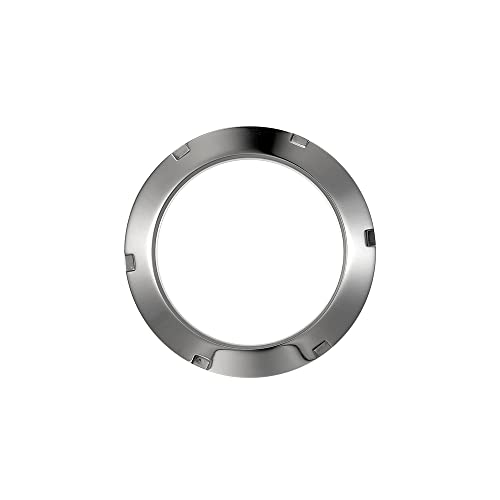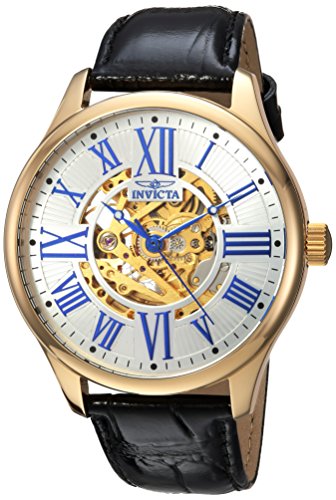Have you ever wondered how the clear, durable, and scratch-resistant sapphire crystal in your favorite watch is formed? As watch enthusiasts, it’s natural to be intrigued by the intricate processes behind the manufacturing of such a vital component. In this blog post, we delve into the fascinating journey of sapphire crystal formation, uncovering its significance in the world of watchmaking. By the end, you’ll gain a profound appreciation for this remarkable material and its role in creating timepieces that stand the test of time. So, let’s embark on this enlightening exploration together.
Top Picks in Sapphire Crystal Watches
What is Sapphire Crystal?
Sapphire crystal is a high-quality material commonly used in the manufacturing of watch crystals. It is renowned for its exceptional hardness and scratch resistance, making it a popular choice for luxury timepieces. In this blog section, we will delve into the properties of sapphire crystal, highlighting its benefits and explaining why it is an ideal material for watch crystals.
Exceptional Hardness and Scratch Resistance
Sapphire crystal is second only to diamond in terms of hardness, ranking 9 on the Mohs scale. This exceptional hardness ensures that the crystal is highly resistant to scratches and daily wear and tear, providing long-lasting durability for your watch. Here are some key points outlining the hardness and scratch resistance qualities of sapphire crystal:
- Hardness level of 9 on the Mohs scale, making it extremely resistant to scratches.
- High scratch resistance ensures that the watch crystal remains pristine and maintains its clarity over time.
- Significantly harder than other commonly used watch crystal materials such as mineral glass or acrylic.
Clarity and Transparency
One of the remarkable qualities of sapphire crystal is its exceptional clarity and transparency. The crystal provides excellent visibility, allowing maximum light transmission. Here are a few points to highlight the clarity and transparency of sapphire crystal:
- Sapphire crystal offers excellent optical properties due to its high transparency.
- It allows for clear viewing of the watch dial, making timekeeping easy and enjoyable.
- Exceptional clarity ensures that there are no distortions or hindrances in reading the watch.
Abrasion and Impact Resistance
Apart from scratch resistance, sapphire crystal also possesses remarkable abrasion and impact resistance properties. It can withstand accidental impacts and minor abrasions without damage. Here are some points to emphasize the abrasion and impact resistance qualities of sapphire crystal:
- The crystal’s exceptional hardness makes it highly resistant to abrasions caused by daily use.
- It can withstand minor impacts without cracking or shattering.
- Offers peace of mind knowing that your watch crystal is resilient and can handle everyday activities.
Anti-Reflective Coating
To further enhance the clarity and readability of watches, sapphire crystals are often coated with an anti-reflective layer. This coating helps to minimize glare and reflections, ensuring optimum visibility in various lighting conditions. Here are a few points outlining the benefits of an anti-reflective coating:
- Anti-reflective coating reduces unwanted reflection and glare, enhancing the legibility of the watch.
- Provides better visibility in bright conditions or under strong lighting.
- Ensures that the watch dial can be easily read from different angles.
Formation Process
Sapphire crystal is a unique material known for its exceptional strength and crystal-clear transparency. While it may seem like a simple product, its formation process is actually quite complex. In this blog section, we will take you through the step-by-step journey of how sapphire crystal is formed, from the extraction of aluminum oxide to the crystal growth methods employed to achieve its remarkable properties.
Extraction of Aluminum Oxide
The first step in the formation of sapphire crystal is the extraction of aluminum oxide, also known as alumina. Alumina is derived from bauxite ore, a naturally occurring mineral that is rich in aluminum. The ore is first mined and then refined through a series of chemical processes to obtain pure alumina powder.
Crystal Growth Methods
Once the alumina powder is obtained, it is time to initiate the crystal growth process. There are two main methods used for this purpose: Verneuil and Czochralski.
1. Verneuil Process
The Verneuil process, also known as flame fusion, is one of the earliest methods used to grow synthetic sapphire crystals. In this method, alumina powder is heated to approximately 2050 degrees Celsius and melted. The molten material is then dropped onto a rotating pedestal, where it cools and solidifies into a cylindrical shape. This method is highly efficient and allows for the production of large crystals.
Key points about the Verneuil process include:
- High production efficiency and scalability.
- Ability to produce large sapphire crystals.
- The cylindrical shape obtained is suitable for various applications.
2. Czochralski Process
The Czochralski process, also known as the pulled-crystal method, is another widely used method for growing sapphire crystals. In this method, a seed crystal is immersed in a crucible containing molten alumina, which is slowly pulled upwards while rotating. As the molten material solidifies and crystallizes, a single crystal structure is formed. The use of a seed crystal ensures that the desired crystal orientation is maintained.
Key points about the Czochralski process include:
- Precise control over crystal quality and orientation.
- Suitable for growing large, high-quality sapphire crystals.
- Versatility in terms of crystal shape and dopant incorporation.
Crystal Polishing and Cutting
Once the sapphire crystal is grown utilizing either the Verneuil or Czochralski process, it requires further refinement to achieve its pristine clarity and smoothness. The crystal is first cut into manageable blocks using precision diamond saws. From these blocks, thin slices are obtained, which are then polished to remove any surface imperfections. The final result is a flawless, optically clear sapphire crystal ready to be used in various applications.
Key Advantages of Sapphire Crystal Formation
- Exceptional hardness: Sapphire crystal ranks just below diamond in terms of hardness, making it highly scratch-resistant and durable.
- Superior transparency: The crystal-clear transparency of sapphire allows for excellent light transmission across a wide range of wavelengths.
- Chemical resistance: Sapphire crystal is highly resistant to chemicals, making it an ideal choice for harsh environments.
- Temperature stability: With a melting point of approximately 2050 degrees Celsius, sapphire can withstand high temperatures without losing its structural integrity.
- Versatility: The formation process allows for the production of sapphire crystals in various shapes and sizes, making it suitable for diverse applications.
In conclusion, the formation process of sapphire crystal involves the extraction of alumina from bauxite ore, followed by crystal growth utilizing methods such as Verneuil and Czochralski. The crystals are then further refined through cutting and polishing, resulting in a highly durable and transparent material with a range of advantageous properties. Sapphire crystal finds applications in industries including technology, optics, and aerospace, owing to its remarkable qualities and versatility.
Applications in Watchmaking
Sapphire crystal has become a popular choice for watch faces in the world of watchmaking. Its remarkable properties make it an ideal material for enhancing durability, clarity, and resistance to scratches. In this blog section, we will delve into why sapphire crystal is making waves in the watch industry and how it adds value and prestige to luxury timepieces.
Durability and Resistance to Scratches
One of the key advantages of sapphire crystal is its exceptional durability. It is a material second only to diamonds in terms of hardness on the Mohs scale. This hardness, combined with its scratch-resistant nature, ensures that your watch face will remain pristine and free from unsightly scratches over time.
Not only does sapphire crystal protect your watch face from the wear and tear of daily use, but it also offers resistance to extreme temperature changes, making it highly resilient in various environmental conditions. This makes it a perfect choice for those who lead an active lifestyle or work in demanding environments.
Crystal Clarity and Transparency
Another significant advantage of sapphire crystal is its outstanding clarity and transparency. When used as a watch face, sapphire crystal provides an unobstructed view of the dial and hands, ensuring maximum legibility and ease of reading. The crystal’s high refractive index allows light to pass through it without distortion, creating an optical clarity that cannot be matched by other materials.
Moreover, sapphire crystal has excellent light transmission properties, allowing for greater luminosity of watch elements such as hour markers and hands. This results in enhanced visibility in both daylight and low-light conditions, further improving the functionality and usability of timepieces.
Luxury and Prestige
Sapphire crystal has long been associated with luxury and prestige in the watchmaking industry. Its use in high-end timepieces is a clear marker of quality and craftsmanship. The deployment of sapphire crystal as a watch face elevates the overall aesthetics of the watch, giving it a sophisticated and elegant appeal.
In addition to its visual appeal, sapphire crystal imparts a sense of exclusivity. The use of this premium material reflects the attention to detail and meticulous craftsmanship that goes into manufacturing luxury watches. Owning a watch with a sapphire crystal face not only enhances your personal style but also signifies your appreciation for fine horology.
Summary: Key Advantages of Sapphire Crystal
- Durability: Sapphire crystal’s exceptional hardness ensures that your watch face remains scratch-free over time, resisting daily wear and tear.
- Resistance to Extreme Conditions: Sapphire crystal can withstand temperature changes, making it highly resilient in various environmental conditions.
- Clarity and Transparency: Sapphire crystal offers unparalleled clarity, allowing for easy readability of watch elements without distortion.
- Enhanced Visibility: The crystal’s light transmission properties improve luminosity, making timepieces more visible in all lighting conditions.
- Luxury and Prestige: The use of sapphire crystal in watchmaking signifies quality, craftsmanship, and exclusivity, adding value and prestige to luxury timepieces.
Sapphire crystal’s remarkable properties and its ability to enhance durability, clarity, and resistance to scratches make it an ideal material for watch faces. Its use in luxury timepieces not only adds value and prestige but also serves as a testament to the dedication and mastery of watchmakers. Elevate your style and invest in a timepiece with a sapphire crystal face that will withstand the test of time.
Maintenance and Care
A sapphire crystal watch is not just a timepiece; it’s an investment that requires proper care to maintain its beauty and functionality for years to come. In this blog section, we will provide you with practical tips and advice on cleaning and maintaining your sapphire crystal watch. By following these guidelines, you can ensure its longevity and optimal performance.
Importance of Regular Maintenance
Regular maintenance is crucial for the upkeep of your sapphire crystal watch. Here’s why:
- Prevents scratches: Scratches on the crystal can diminish the overall appearance of your watch. Regular maintenance helps prevent these unsightly marks, ensuring your watch looks pristine at all times.
- Maintains clarity: Over time, dirt, dust, and oils can accumulate on the watch face, affecting its clarity and readability. Regular cleaning ensures that your watch face remains crystal clear, allowing you to read the time effortlessly.
- Preserves water resistance: A sapphire crystal watch is often designed to be water-resistant, protecting the internal components. Regular maintenance helps maintain this water-resistant feature, ensuring your watch remains functional even in wet conditions.
Now that we understand the importance of regular maintenance, let’s dive into the dos and don’ts of cleaning your sapphire crystal watch.
Cleaning Methods: The Dos and Don’ts
Dos
- Use a soft, lint-free cloth: Start by gently wiping the watch face and crystal with a soft, lint-free cloth to remove any loose dirt or dust.
- Crystal-safe cleaning solutions: Use a small amount of crystal-safe cleaning solution specifically designed for sapphire crystal watches. Apply the solution to a clean, soft cloth, and gently wipe the watch face in a circular motion. Be sure to follow the manufacturer’s instructions for the cleaning solution.
- Rinse with clean water: After using a cleaning solution, rinse the watch face with clean water to ensure no residue is left behind. Use a gentle stream of water or immerse the watch in a bowl of water while carefully avoiding the watch’s crown and buttons.
Don’ts
- Avoid harsh chemicals: Harsh chemicals, such as ammonia or bleach, can damage the sapphire crystal. Steer clear of these substances when cleaning your watch to prevent any potential harm.
- Avoid abrasive materials: Scrubbing your watch with abrasive materials like brushes, paper towels, or tissues can cause scratches on the crystal surface. Stick to using soft, lint-free cloths for cleaning.
- Keep away from extreme temperatures: It’s important to avoid exposing your watch to extreme temperatures, as sudden changes in heat or cold can cause the crystal to expand or contract, potentially leading to damage.
Additional Maintenance Tips
In addition to regular cleaning, here are a few more tips to keep your sapphire crystal watch in top-notch condition:
- Avoid impact and pressure: Sapphire crystal is known for its durability, but heavy impacts or excessive pressure can still cause damage. Be mindful of any potential impact or pressure, and try to avoid activities that may expose your watch to such conditions.
- Proper storage: When not in use, store your watch in a protective case or pouch to prevent scratches or dust buildup. This will help maintain its luster and ensure maximum longevity.
- Regular professional servicing: Periodically, it is recommended to have your sapphire crystal watch professionally serviced. This includes checking the movement, lubrication of parts, and waterproofing, which may require the expertise of a qualified watchmaker.
By following these maintenance and care tips, you can enjoy the pristine beauty and reliable performance of your sapphire crystal watch for years to come.
Remember, a little care goes a long way in preserving the longevity and optimal performance of your treasured timepiece!
Unlocking the Mysteries of Sapphire Crystal Formation
In summary, understanding how sapphire crystal is formed gives us a deeper appreciation for its unique qualities and its role in watchmaking. Its exceptional durability and aesthetic appeal make it a sought-after material among watch enthusiasts. By properly maintaining sapphire crystal watches, we can enjoy their timeless elegance and durability for many years.













